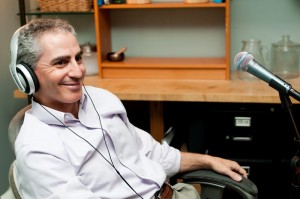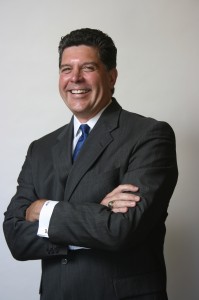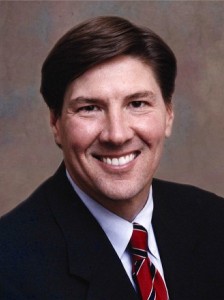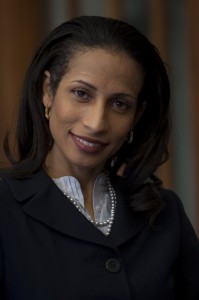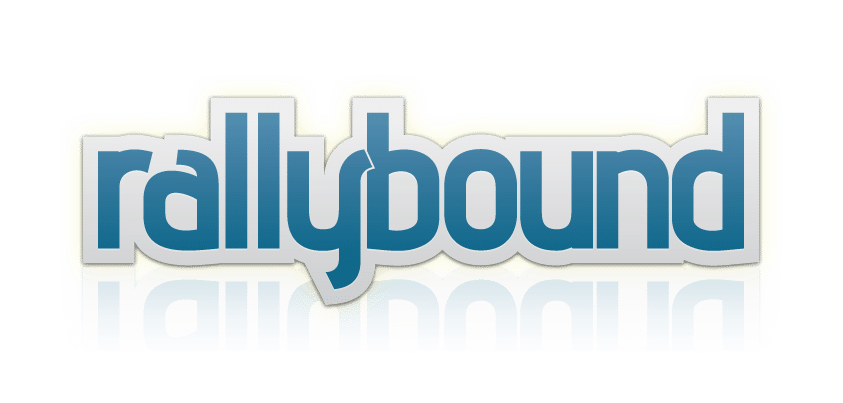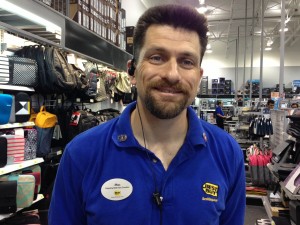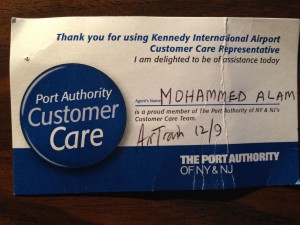
Crystal Mahon & Christian Robillard: Donor Surveys
You’ll make the most of the donors you have by discovering their potential through surveying. Crystal Mahon and Christian Robillard talk principles, best practices and goal setting. Crystal is with STARS Air Ambulance and Christian is at Beyond The Bake Sale.


Celina Stewart & Gloria Pan: People-Powered Movements
This team helps you build more effective and inclusive movements, by encouraging you to think about communications, power and privilege. They’re Celina Stewart from League of Women Voters U.S. and Gloria Pan with Moms Rising.
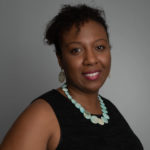

Listen to the podcast
Podcast: Play in new window | Download
Get Nonprofit Radio insider alerts!I love our sponsor!
Donorbox: Powerful fundraising features made refreshingly easy.
We’re the #1 Podcast for Nonprofits, With 13,000+ Weekly Listeners
Board relations. Fundraising. Volunteer management. Prospect research. Legal compliance. Accounting. Finance. Investments. Donor relations. Public relations. Marketing. Technology. Social media.
Every nonprofit struggles with these issues. Big nonprofits hire experts. The other 95% listen to Tony Martignetti Nonprofit Radio. Trusted experts and leading thinkers join me each week to tackle the tough issues. If you have big dreams but a small budget, you have a home at Tony Martignetti Nonprofit Radio.
View Full Transcript
S3 bucket containing transcription results: transcript.results
Link to bucket: https://s3.console.aws.amazon.com/s3/buckets/transcript.results
Path to JSON: https://s3.console.aws.amazon.com/s3/object/transcript.results?prefix=czM6Ly9hdWRpby5tcGdhZHYuY29tLzIwMjMvMTEvNjY4X3RvbnlfbWFydGlnbmV0dGlfbm9ucHJvZml0X3JhZGlvXzIwMjMxMTI3Lm1wMw–.1700693571.json
Path to text: https://s3.console.aws.amazon.com/s3/object/transcript.results?prefix=transcript/2023/11/668_tony_martignetti_nonprofit_radio_20231127.txt
And welcome to Tony Martignetti nonprofit radio. Big nonprofit ideas for the other 95%. I’m your aptly named host and the pod father of your favorite abdominal podcast. Oh, I am glad you’re with us. I’d suffer the effects of emphasis if you inflamed me with the idea that you missed this week’s show. Here’s our associate producer, Kate. What’s going on this week? Hey, Tony, we’ve got two convos from 2020 donor surveys. You’ll make the most of the donors you have by discovering their potential through surveying Crystal. Mahan and Christian Robillard talk principles, best practices and goal setting. Crystal is with stars air ambulance and Christian is at beyond the bake sale. Then people powered movements. This team helps you build more effective and inclusive movements by encouraging you to think about communications, power and privilege. There’s Selena Stewart from League of women voters, us and Gloria Pan with moms Rising. These both aired on August 7th 2020 on Tony’s Take two Happy Thanksgiving. Unbelievable were sponsored by donor box, outdated donation forms blocking your supporters, generosity. This giving season donor box, the fast flexible and friendly fundraising platform for nonprofits. Donor box.org here is donor surveys. Welcome to Tony Martignetti nonprofit radio coverage of 20 NTC 2020 nonprofit technology conference in 10 made the excruciating decision to cancel the nonprofit technology conference. But we are continuing virtually, you’ll get just as much value. Uh We don’t have to all be close to pick the brains of uh the expert speakers from uh from N 10. My guests now are Crystal Mahan and Christian Robillard Crystal is manager of annual giving at Stars Air Ambulance and Christian is founder and chief podcaster at Beyond the Bake Sale. Crystal Christian. Welcome. Welcome to nonprofit radio. Thanks, Tony. Thanks, Tony, great to be here. Uh It’s a pleasure to have both of you. Um You are both in uh in Canada uh Crystal. You are in uh Alberta and Christian. Remind me where you are. I’m in uh beautiful sunny Ottawa, Ontario, Ottawa, Ottawa, the capital, the nation’s capital. Not to be, not to be disputed with Toronto who uh likes to think they’re the capital. I know well, and many Americans think it’s either Montreal or Toronto. Yes. But uh Ottawa capital. All right. I’m glad to know that you’re both well and safe. Um And, and glad to have you both with us. Thanks. Um We’re talking about donor surveys. Your, your NTC topic is uh donor surveys, your untapped data, gold mine. Uh Crystal. Why are surveys? A data gold mine? Well, we had the fortune of launching a survey. We’ve never done one prior to 2016. And when we did it, we were amazed at what we found. So we learned a lot about our donors in terms of their communication preferences. We made money like easily made net on that. And on top of that, we actually ended up learning a lot about time giving prospects and turns out that there were a lot of donors that we had no idea, had named us in their will or were interested in naming us in their will. So there was a lot of revenue like hidden revenue that we were finally getting access to. So that’s sort of where that line is moving here. What’s what it’s referring to? Interesting. I’m, I’m looking forward to drilling into that more because I do plan to giving fundraising as a consultant. Uh And I’m sometimes asked by clients about doing surveys. Um So I’m interested in what you’re doing as well. Um And, and you’re getting uh gifts, you said you’ve made money back from them. So people do send you gifts of cash along with their surveys. Yes, like this year we did uh early because last year 2019, our Stars Ally survey made $300,000 and then that all all the new people that we found for plan giving, like we’re looking at billions of dollars coming into the door in the future for stars. So it’s yeah, to not do a survey just seems like a huge opportunity at this point. Yeah, my good. Did you say billions with a B no millions with an millions? OK. The audio is not perfect. So it almost sounded billions. So I wanted to be sure because I’m sure listeners have the same question. OK. Millions, millions are still very, very good. Um Christian, anything you want to add to about why these are uh such a gold mine for nonprofits? I mean, besides the fact that you’re using data, obviously to reinforce certain decisions and to highlight certain wealth elements, I would say in terms of your sponsorship potential, I know that a lot of organizations are looking more so into the corporate sponsorship, corporate engagement side of things. And I think with your, your donor surveys, you can really reveal a lot around where people are working their levels in terms of uh positions within a certain company or organization. And that can lead you down some interesting paths from a corporate sponsorship perspective. OK. OK. Um Your um your description of the, the, the workshop said that uh you make the most of the donors you already have and it sounds like you, you both obviously are, are are going there, is there anything you wanna add about sussing out the, the, the the value that’s in your uh that, that you don’t know you have among your current donors? Well, from our perspective, like it’s given us an opportunity to get to know our donors better in terms of what, what are they actually interested in learning about in our organization or why are they choosing to give? And it allows us to tailor our messages and just be a lot more personal with them and act like we really know them as opposed to them just being a number in our database. So it really give us an opportunity to really cultivate that relationship and just continue bringing them on board and continuing that relationship with them. Yeah. OK. Um Is, is most of your uh content in the, in the workshop around the best practices for, for surveys? Is that what we’re gonna be exploring? Mostly Christian, feel free to jump in. I would say that we were working a lot at best or best practices then also case studies. So people would have some tangible examples of how to actually launch one but to consider and what they would actually need to do once they go back to their nonprofit actually. Ok. All right. Well, let’s, um, let’s start with like, where, where do you get started? W who, who, who are the best people to send surveys to or, or what types of information are, are you finding or most uh re responded to or what types of questions are most responded to? How can you help us sort of frame uh uh an outline of what we, where to get started? Well, Christian and I talked a lot about building the proper scope of your survey. So, figuring out like, why exactly are you doing the survey? What are you trying to find out? And once you kind of, I guess tailor down exactly what you’re trying to learn or what you’re trying to achieve that can sort of help you figure out who you need to actually reach out to and what demographic or audience you need to build that sort for. Ok. So like starting with your goals, what’s the, what’s the, what’s the purpose of the darn thing? Yes. OK. OK. Um Christian, you wanna, you wanna jump in around, you know, starting to get this process started? Yeah, absolutely. And I, I think uh as crystal and I were kind of building this piece out whether you’re talking about uh more of a philanthropic focus for your survey or whether you’re talking about more of a corporate kind of sponsorship, focus of it. You ultimately want to ask yourself a number of different questions before you can get going things around. What you ultimately want to know about your donor base or about this particular audience population that you’re ultimately looking for. More information on. Why are you doing this in the first place? Is, is this more responsive, isn’t it more of a proactive type survey to uh explore new avenues? What do you ultimately need to know? I think that’s an important element to focus on is not asking everything but asking the right. Things who do you need to ask? So who is the actual population that you’re targeting at the end of the day? Uh What would you do with the information? So don’t just collect information for, for information sake, not that, that’s not important, but what’s the actual actionable pieces for that? And how are you going to protect that information? I think with the today’s sensitivities around, around data privacy, it’s really important for, for charities and nonprofits to steward that data as they would, any type of gift that they ultimately get. Yeah, in terms of the data stewardship that, that might constrain what you ask as well because now you have um uh conceivably a higher level of security that you need to maintain. Absolutely Tony and even just in terms of sensitivities of, of phrasing certain questions, I think it’s important for you to think about how you phrase certain things and how intimate you’re ultimately getting. And if you do get that intimate, like you said, how do you protect that data? But also what’s the purpose for collecting that particular piece of data aside from, well, it might be a nice to have someday instead of this actually contributes towards our, our bottom line. Now you’re doing uh surveys around corporate sponsorship. Uh Right. That’s, that’s the example you mentioned. So you’re, you’re getting to know where people work so that you might use that information for potential sponsorships. Yeah, I mean, when you look at sponsorship. Ultimately, it’s, it’s very much a business transaction. If you look at how Forbes just uh defines sponsorship, it’s very much the cash and in kind fee paid to a property, a property being, whether it’s a charitable run or some type of adventure or conference in this case, um in return for access to the exploitable commercial potential associated with that property. So you think of any other type of exploitable commercial potential, which is the most buzzwordy definition you possibly could. If you think of any type of advertising medium, whether it’s TV, radio print, you wanna know ultimately who’s in your audience. And one of the best and most effective ways to do that is to conduct some type of survey to really tease out who are some of your very specific or niche audiences in Canada, we say niche. So it’s a bit of a cringe for uh for us up here in the north. But uh having a survey to really tease out who are, who’s in your audience and some of the more behavioral psychographic uh demographic features of that audience are particularly important to, to have to really make a compelling case to, to corporations looking to use sponsorship with your organization. OK. Um What format are you using? Christian Crystal? I’m gonna ask you the same thing shortly. What, how are these offered to people? Yeah. So we, so in the experience that I’ve had, we usually use a survey monkey survey of some kind that allows for a lot of cross tab analysis to be able to say that people who are in between the ages of 18 and 29 have this particular set of income. They have these particular purchase patterns, they care about your cause to nth degree they um are engaged with your cause or with your property and whether it’s through social media or through certain print advertisements or whatever that might be. And we usually collect around 30 plus data points on all of those uh on all of those elements ranging from, again, the behavioral to the demographic, to psychographic to some very pointed specific questions around the relationship between your cause and the affinity um for a certain corporation based on that uh based on not caring for that cause. Yeah. Uh So you said collecting around 30 data points? Does that, does that mean a survey would have that many questions? Absolutely. Oh OK. Now I’ve heard from guests in the past may have even been NTC guests, not this year, but the, you know, the optimal number of questions for a survey is like five or six or so and people bail out uh beyond that point. Yeah. And, and usually before I had actually sent out a survey of that magnitude, I would agree with you, Tony and I would agree with most, I think the, the important differentiators one is that you frame it as it’s very much for improving the relationships and the ability for the, the cause properties, whether that’s your, run your gala, whatever that might be to raise money. And usually the audience that you’re sending that to is very receptive to that. I think you want to frame it also, as you’re only collecting the most important of information. And uh you’re also looking at uh again, like you’re incentivizing it in some way, shape or form. So usually when you tailor it with some type of incentive, be it a $50 gift card opportunity to win something like that, usually people are a lot more are a lot more receptive. And in the time that we’ve done surveys, whether it’s in my, my past days consulting in the space or now doing a lot of work with charities and nonprofits, we’ve sent it to tens of thousands of respondents and you get a pretty, a pretty strong response rate and a really nominal if negligible amount of an unsubscribed rate. So people are not unsubscribing from getting those questions. And in fact, they’re answering a lot of them and an important element as well as making them optional. So not forcing people to have to fill out certain pieces but giving them the freedom to answer whichever questions they feel compelled to. But when you’re doing it for the cause people are pretty, are pretty compelled to respond to those types of questions. Crystal, how about you? What what format are your, your uh surveys offered in? We do both offline and online. So our donor base tends to be a little bit older. So for us, the physical mailing is absolutely mandatory because, because a lot of our donors respond that way. Um But we do also produce an online version for, I guess other parts of our donor base that are in a di different demographic or just based on that person’s preference, just giving them that opportunity. Um But what we did find is that in terms of our offline responses, we had a lower response rate in terms of responses to the survey. But exponentially more donations coming through offline as opposed to online. And then for online responses of the online survey, we had a lot more responses to the online survey but far fewer donations. So we found that there was an inverse relationship there. And I thought that was very interesting. It’s time for a break. Are you looking to maximize your fundraising efforts and impact this giving season? Donor Box. Online donation platform is designed to help you reach your fundraising goals from customizable donation forms to far-reaching easy share, crowd funding and peer to peer options. Plus seamless in person giving with donor box like kiosk. Donor box makes giving simple and fast for your donors and move the needle on your mission. Visit Donor box.org and let donor box help you help others. Now, back to donor surveys. Do you uh subscribe to the same uh opinion about the, the length that there can be up to 30 questions in a, in a survey. As Christian was saying, we personally haven’t practiced that. We usually keep ours between five and 10 questions and sometimes we even tailor it. If we know that somebody is interested in a particular program, we might take out a certain question put in something else related specifically to them. So there is some variability in the surveys, but generally we keep them quite short. But I do agree with Christian for sure in terms of really framing the purpose of the survey. And each of the questions around this is the whole purpose of this is to build our relationship with them and to better serve them and to get to know them better. And I think that really makes a huge difference and then we also do the incentivizing approach as well. So I think that also inspires people to uh I was just gonna ask about incentivizing, OK. Something similar like a, a drawing for a gift card, something like that. Yeah, we get a Stars Prize pack because we wanted to do something that would be specific. They couldn’t get something that they could elsewhere. So, yeah, we, we have started merchandise. So that’s one of our OK. Um I’m gonna thank Christian for not having a good uh a good video uh appearance because this video I’ve done 10 of these today and they’re all gonna be, all the videos are gonna be preserved except this one because Christian um has a very extreme background. It’s really just like a silhouette, a head with headphones is really about all I can see. But um I’m grateful because my background just fell. I have a little Tony, I have a Tony Martignetti if you watch all of these videos, which are gonna be available. Uh There’s a Tony Martignetti nonprofit Radio, um sort of easel, you know, um CEO core, you know, sign and uh it was behind me. Uh It was, and it just fell while uh Crystal was talking. So thank you. Uh Christian. I was just so surprised that you could ask 30 questions on a survey and get some type of uh degree of response. So it, it, it shook my house that I’m 30 data points. What madness is this? I’m so aghast at it. Yes. And then also the fact that the two of you disagree. Um All right. So, but I’m shouting, calling myself out as uh having a, a flimsy background but it lasted through, it lasted through like seven hours of this. I love it. I also say that we don’t necessarily disagree, but I think different surveys serve their different purposes. So I agree with Crystal that in, in that particular case, you only need to send one that has 5 to 10 questions. Whereas in this case, you’re probably sending it to, in, in a sponsorship case, you’re probably sending it to a larger population of people and you only need a certain amount of people to fill it out. So, um, Crystal, I had asked you and you probably answered, but I got distracted by my collapsing background. Uh What, what kinds of incentives do you offer? Uh, we offer Stars price pack. So it’s Stars merchandise. So we wanted to offer something a little bit different other than like a gift card that they could get through any other. Yeah, so that’s all right. Um a different angle for us. Yeah. Personalized to Stars. Ok. Got you. Ok. Um Now was yours specifically uh uh a planned giving survey or did you just have a couple of planned giving questions? And that’s where you discovered this data, gold mine of future gifts and all the wills that you found out that you’re in. It was not, it was not specific to plan giving. So it was more just a general survey. And then we did have a question about plan giving and then we were stunned by the response that we saw in subsequent years. We kept asking that and right now we’re sort of in the middle of doing a whole plan giving strategy and trying to really build that out now that we know that there is this whole core of people that are interested in this and that our donors are open to it. So it’s really opened up a lot of opportunities for us as an organization of all. Yeah. Interesting. Ok. All right. So, you, you learned from the first time this is, you’re in a lot more states than you had any idea. Yeah. Um, le let’s, let’s talk about some more, uh, good practices for surveys. Uh, Crystal. Is there something you can, one or two things you wanna recommend and then we’ll come to go back to Christian. Yeah. One of my major things is that if you’re gonna ask a question, you have to know what you’re gonna do with that data after the fact, like a pet people sign is where people just ask a question to ask a question for whatever reason, but then they don’t action anything out of it. Like to me, it’s very important that if our donors are going to spend the time to actually read through your survey and take the time to respond or mail it in or submit it online that we actually to do something with that information. So whether that’s tailoring future messaging or changing their communication preferences or whatever it is that they’re asking us to do or telling us, I think that’s so important is that you have to have a follow up plan in terms of once these responses come back in, what are we gonna do with them? Who is gonna take action? How are we gonna resource this? How are we going to use this information, I think of um date of birth as, as a good example of that, like if you’re gonna, if you’re gonna develop a plan to um congratulate someone for their birth on their birthday each year, then that can be a valuable data point. Um But if you just, you know, if you’re just asking because you, you know, you don’t have a purpose, you’re just interested in what their age is for some vague reason, then, then there’s no, there’s no value in asking. And if, if it’s just a follow up, if it’s just to know their, you know, when you want to send a card, maybe you don’t need the year, maybe you just need the day in the month. Um But if there’s value to your database for knowing their age and then you would ask the year. Exactly. So it helps you filter down there. What do we need to know? And why are we asking these question? What is the purpose, Kristen? You have a uh uh best practice you want to share. Yeah, I would say consider the not just the population size that you’re not just the population that you’re serving, but also the, the representative makeup. So if you know that your database is predominantly on more of the, the senior side of things, but you’re getting a disproportionate amount of, of more uh individuals who are on the younger side of things in terms of respondents that’s something important that you have to take into account. So the make up of the actual population is um is more important than I would argue than the amount of responses. You can get a crazy amount of responses. But if it doesn’t represent the population that you’re serving and that who make up your donors, it’s, it’s not gonna be valuable data to you. I remember one time we had uh an instance for an organization wanted to uh want to do a survey for sponsorship purposes and in other cases, it’s been for more donor specific like, oh, we’ll just put a note on Facebook or Twitter or something like that. It’s not necessarily your population, it’s not necessarily the group that you’re looking that you’re actively engaged with. Um in a fundraising perspective, you get information to the otherwise and then obviously reflect on that and use that. But um be really clear about the, the breakdown that you need to have in order to make the, the information actually representative of the rest of your database. Um What, what kinds of response rates like? What’s, what’s a decent response rate to a, to a, to a survey? I uh I think it depends what type of server you’re sending. I will, I’ll let Crystal speak to this more, but I’d say if it’s philanthropic, it can vary on the sponsorship side of things you’re looking for. Um a response rate that coincides with a 95% confidence interval with a 5% margin of error. That’s good market data to calculate that. There’s a bunch of big cal complicated formulas that we probably have all repressed from our time. In uh in statistics in uh in university, there’s a, a company called Surveymonkey that actually has a calculator for it. So if you go to the Surveymonkey website, you can actually um just plug in a what the sample size or what the actual size of the, the database you’re sending it to and you can plug in what confidence integral that you want and then what margin of error that you’d like and it’ll pump out a number of a minimum that you need to have. I would say that’s a good starting point. But again, as I talked about before, make sure you have the representative breakup breakdown of uh of who’s actually within your audience reflected in the survey results. And don’t have it disproportionately skewed towards a particular demographic that might be just more inclined to uh to respond to surveys. OK? OK. Um Crystal, anything you wanna add about uh the, the, the confidence it’s, it’s different. But, but yeah, but yeah, that I I withdraw that, that doesn’t make sense for you because you’re doing individual philanthropic surveys. So each response you get is valuable. You find out that someone is interested in plan giving already, has you in their will. That one response has, has great value yes, the purpose of our survey is a little bit different. So we don’t worry so much about that, but I completely agree that the Christian in terms of actually needing to calculate that and being mindful of who you are actually reaching out to with this survey to make sure that the representative of the, that you’re trying to question your survey. What what, what kind of response rate do you shoot for though Crystal? Cause still, you know, these, these things take time and you’re doing some of them are offline. So there’s postage and printing, et cetera. What kind of response rate do you consider good for, for an effort like that in terms of a financial response rate? So what I would clarify that for us, our response to the survey doesn’t necessarily mean a gift and a gift to the survey doesn’t necessarily mean that they responded to the survey. So in terms of number of gifts, we usually aim for between six and 10%. Um But in terms of actual response to the survey, we’ve seen as low as 2% but then as high as 7% depending on the year of the channel. Um So either way, like we have, we’re quite lucky, we have quite a large database. So any of these hands could be 50,000 people or more. So even 2% it is a pretty decent sample and gives us a lot of work to do and a lot of information to build off of? Ok. Ok. Um, for your online surveys, Crystal, are you using surveymonkey also? Did you say I’ve used a couple? We used Surveymonkey last year. Um, it is very user friendly. What I would caution people on is to always read the fine print about whatever price package they’re signed up for because like we discussed for our surveys a lot, a big focus is the financial return on it. So we needed to pick a price plan that involve being able to redirect right from the survey monkey page to our donation form. So you have to be really mindful of things like that. So in some of the basic packages, they don’t allow you to redirect to the donation form and that if you can’t do that, that will really negatively impact your financial return of the number of donations you’re going to see in? Ok. Is there another online tool that you like? Also I used a platform called Response, I believe they’re based out of Sweden or somewhere in Europe. And they were very good to be honest. So and there are some limitations as well with them in terms of what the different packages offer. But right now we’re using Surveymonkey and that’s what we’re sending out our like, for example, like even surveys, we’re sending out the survey Monkey or any of our ST based ones. So that’s what we’re using actively. OK. How about you Christian. Is there another one besides Survey Monkey that, uh, you could recommend? I, I think it just depends on what you’re, you’re looking for Tony. So, if you’re looking for a lot of, let’s say more Q answers, I’d say even a Google form would, would be more than, would be more than acceptable. It really just depends on what functionality you want to get out of. I use Surveymonkey pretty religiously just because it’s like Crystal said, it’s very user friendly. It has the functionality that I need and it’s real and it’s relatively um reasonable in terms of, in terms of price point for what you get. Um It’s also going to depend and it’s up to you to do due diligence on what types of functionality you need. Do you need to integrate with your database versus other software? Do you need certain functionality? Do you actually know how to use a lot of those things? Is there going to be support? And again, like what, what are they going to do with your data? Like do they have access to your data, whether it’s metadata or otherwise? Are there other rules or jurisdictions you have to consider with that, that data privacy? So I use Survey Monkey. But lots of considerations to make. Ok. Ok. Thank you. And um so Christian, why don’t you uh why don’t you lead us out with some uh take us out with uh some I guess motivation, closing thoughts what would you like to end with? Absolutely. I would say from a sponsor perspective, whether you’re a large organization or small organization, the, the riches are in the niches. So to do good sponsorship, it requires good data and it requires those 30 plus data points. But whether you’re a big group or a small group, you can compete at the, the same scale, especially um with the amount of money that’s being spent on cost sponsorship over $2 billion worldwide, which is no small amount of money that’s that you can get access to whether you’re $100,000 a year org or a million dollars plus requires good data. So make sure you’re collecting good data. Make sure you’re clear on uh what you want to use your information for and uh yeah, just be, be diligent in uh in making sure that the, that the data is actually protected. Ok. Um I was, I was, I was gonna let Christian end but since the two of you have such divergent purposes, which is fabulous for, uh it’s great for a discussion, uh, divergent purposes around your surveys. Crystal, why don’t you take us out uh on the, on the philanthropic, the individual donor side? Yeah, absolutely. So, like we were discussing, don’t be afraid to fundraise. Like, just because it’s a survey doesn’t mean that you can’t make money off of it. Your people are supporting you enough that they’re willing to fill out a survey and respond to you, they may be willing to donate as well. And then on top of that, like I said, you, you have to know why you’re asking these questions and what you’re gonna do with that information after. It’s really important in terms of respecting your donors time and the fact that they’re giving you this information, you need to be able to use it and sort properly and safely. And then lastly, I just say, please, please, please test your survey before you actually send it out, send it out to other departments or other people that are not in the midst of building the survey so that you can find out that you phrase things appropriately. You’re actually learning what you want to or the functionality is appropriate. I think that’s just so important because you only have one chance of sending it out. So just make sure that it works appropriately. Ok. Thank you very much. That’s Crystal Mahan Manager of Annual Giving at Stars Air Ambulance. And with her is Christian Robillard founder and chief podcaster at Beyond the Bake Sale Crystals in Alberta. And uh I’m sorry, Crystal, did I just say crystal? Yeah, I know crystal. Say crystal. Crystal. Crystal. Crystal. I know is in Alberta. We don’t make it easy on you, Tony and I, I got through 25 minutes so well. And then it’s a lackluster host. I’m sorry. It’s uh this is who you’re stuck with the Christians in the capital city of Ottawa. Thank you so much, Christian Crystal. Thank you very much. Thanks Tony. It’s time for Tony’s take two. Thank you, Kate. Happy Thanksgiving. A week late. Can you believe that your lackluster host forgot that last week’s show should have included Happy Thanksgiving. We were doing the show the week before and it never occurred to me and I would say parenthetically it did not occur to our associate producer either. That’s the end of that parenthetical. I’ve always wanted to have an intern so I could have somebody to blame. You’ve heard me say it. Give me an intern, I need somebody to blame but just leave it right there. I have to wish you happy Thanksgiving a week late. I hope you enjoyed past tense. Hope you enjoyed your Thanksgiving last week. That’s the best I can do on Tony’s take two. There’s a nice little, uh, whimsical little rhyme. That is Tony’s take two, Kate. Well, um, thank you for putting it on me. But, uh we all know that it was your mistake and it’s ok. We forgive you. Um Tony for forgetting Thanksgiving. Yeah. All right. I’m not sure that, uh, you’re quite gonna get away with that. It wasn’t on you. I, I put it in parentheses in parent. Oh, I, I need an intern so I can blame them on everything. Yeah. Well, you’re not an intern. You’re the associate producer. I put you in parenthesis. I put the I put the blame statement in parentheses. I thought that would be good. Alright, let’s go. Well, we’ve got Buku but loads more time here is people powered movements. My guests now are Selina Stewart and Gloria Pan Selena is senior director of advocacy and litigation at League of Women Voters us. And Gloria is Vice president for member engagement at Moms Rising, Selena Gloria. Welcome. Hello, I’m glad we were able to put this together virtually. It’s good to see both of you. Um And I’m glad to know that you’re each well and safe and in uh either DC or just outside DC. Selina, you’re in DC and Gloria. Where are you outside Washington, Gloria? I am actually near Dulles Airport. So, you know, some people commute from here but because um mom’s rising is a virtual organization. I don’t. And so when people ask me for lunch, I’m always like, ok, it takes a little bit more planning. I have to bend my mind about it. I have to get my body into D CDC. OK. Um Your uh your NTC topic is a revolution is coming top tactics to build people powered movements. Um Selena, would you get us started with this? What, what was the need for the session? Well, I think um I think one of the things is right now it’s all about people power. You know, there’s everything is so politicized right now and I think that there is often a conversation about how people are involved in what, what government actually represents or what the government is representing. So I think that that’s really, really important. Um We also saw like in 2018 more voter turnout mo more voters turning out to vote and things like that. So I think that that also is as part of that people conversation, like what is compelling people to participate even more or at a greater extent than their democracy. But all of these things kind of work together to figure out, not only do we have people engaged now, but what is important? What does community as more people become engaged? Um How does, how does our definition of our community and communities in general change as more people are included and participate in all of those things? So I think that we’re at a very um interesting and crucial moment in time and so people powered and, and people involve movement. It’s, it’s, I think it’s always happened but it’s just a, a coin phrase. I think that’s especially prevalent right now. OK. Um Gloria E even though participation is, is uh is very high, we’re also largely polarized. So how do we overcome the opposite ends of the spectrum to try to bri bring people together and, and, and organize? Are you talking about everyone or are you talking about voters? Uh I’m, well, I’m talking about the country. Uh I don’t know, I don’t know whether I don’t know whether people are voting. Um But I’m talking about our political polarization. I don’t know if they’re necessarily voting. Uh I, they actually talk about voting so I probably threw it off a little bit, Gloria, they act like I’m asking for clarification only because like some of the most talented and I think unifying um politicians in recent memory, for example, Barack Obama did not succeed in unifying all of us, right? So there are some segments of our um citizenry that will just not do it, we will not be able to come together with them. But I think that for um people who really do want the best for our country and who are open minded enough to um want to hear from other people who have different um you know, slightly different ways of looking at the world. It is possible to do it. And um that goes back to what Selena was saying about people powered movements. Um I think that one of the reasons why that’s become more and more of a catchphrase is that um you know, we are in an era of information overload, we are in an era of polarization and um not believing everything that we’re seeing on the internet and in the news. And so being able to actually really connect with people on the ground in person over the phone, but directly and not going through the filter of social media or news movements is, it’s increasingly important and that will be um one of the main channels for us to unify as many people as possible. So, we’re, we’re, we’re talking about uh creating these both online and offline, right? Um Or uh people powered pe people centered movements. Um How Gloria, how do we want nonprofits to think about uh or what do we need to think about in terms of doing this, organizing uh creating these, these movements. Um First of all, it’s about um inclusivity. OK. So um at least from where we sit, um mom’s rising and me speaking on behalf of mom’s rising right now, um We want to make sure that whatever we do and if its the most people and harms no one at all, if possible. Um So that’s one part of it, how we speak, how we communicate to make sure that what we’re speaking and how we communicate does not reinforce that stereotypes that creates divisions. OK. That’s one way. Um Another way, not way, but another thing to consider are also the tools that we’re using. Um Are we using, you know, people are on, on different kinds of communication tools, some people um only do Facebook, other people only do um email. Um And there are also like text messaging. There are all of these new com communication schools tools coming on and being on top of the different tools is super important because we need to meet people where they are um those are just a couple of thoughts. Ok. Um So we, so Selena, so we’re talking about diversity equity inclusion. Um Let, let’s drill down into a little of the like, what do we, what do we need to do around our communications? That is more equitable and non harming. So I think that’s an important question and that’s definitely something that has been centered um in the league’s work over the last I would say five years, but more intentionally over the last two, I’m sorry, I’m sorry, whose work the league? I’m sorry, I always refer to the league, women voters, women, voters, us. OK. The leagues were at the league. Sorry, folks. The that the full title is just too long for me to keep saying. So I just referred to it as I got you now. All right. So de I is, is very, very important. Um for us, you know, our organization has historically been older white women. We’ve al always had members of color, but I don’t know that they were always at the forefront. So for us, our work is really centered in two questions and in everything that we’re doing, who’s at the table and who should be at the table, who’s missing. So I think starting all of our conversation and the efforts that we’re doing with those two questions allows us to center our work in diversity, equity inclusion and also use our power as um people who have had access to legislators, stakeholders, etcetera. How do we use our power in a, in a way that allows access and inclusivity for more people. So I think that that is really important and something that D I diversity equity inclusion work is hard. Let me just say it’s not easy, you know, it, it gets very uncomfortable. A lot of times when you’re talking about privileged patriarchy and all of the, we have to talk about as it relates to D I. But it’s so important to get comfortable and being uncomfortable and having these conversations is the only way I think that we can start to build a bridge towards unifying. Um because at the end of the day, we may be politically, but at the end of the day, we all share many of the very same values which is historically united this country. Like right now, we’re in the midst of the Coronavirus. The Coronavirus doesn’t care whether you’re a Republican Democrat, black, white female male. It does, it doesn’t matter. Um At the end of the day, we all have to make sure that we’re doing what we can to be safe as individuals, but also our actions greatly impact the people around us. So it’s more of a, it’s more of a community mindset that’s required in order to tap this down. So I know that that’s like a little offset offshoot from what we’re talking about. But I think it all plays together in some way, shape or form? Ok. Um Gloria, how about, how about uh for mom’s rising? I mean, how do you ensure that your communications are equitable and, and non harmful? Um Well, mom’s rising um has very intentionally built an organization that tries to bring different voices to the table. We are intersectional and we are multi issue. And so from our staff, um we’re very diverse in many, many different ways And from the way that we um choose which issues to work on, we also take into consideration um which communities are being impacted. Um And um how we communicate about those and then the way that we um campaign is that our, our campaigns are always overlap. And so there are different people within the organization as well as the partner, policy partners from different issue areas. They help us um vet our issues and in the way that we communicate with them to make sure that, you know, there are um we’re not communicating in a way that, that, that um excludes communities reinforces that stereotypes. Um and raises red flags makes, make, make people feel bad in ways that we don’t understand because of where we individuals as campaigners know. So everything we do is very thoroughly vetted through many different filters. OK. So vetting. Yeah. So please, yeah, Selena, I totally agree with um what Gloria said and I think that’s really important because the league is also multi issue and and kind of has that you have to compete when you have multiple issues, you sometimes have to think a little differently about how you present yourself on each issue in order to not negatively impact the whole set of what you’re trying to accomplish. And so for us in the communication space, um expressly is thinking about whether it’s appropriate, who’s the appropriate messenger when we’re communicating. So, is it appropriate for the league to be a leader in this space or do we need to take a step back and be a supporter? Um So I think that’s one of the things that’s very important for us, communication wise is we’re figuring out what is, what space are we gonna take up in the communication space and how we’re going to communicate this issue? And then the other piece is who’s talking, who is the person that we’re putting in front to actually speak about a particular issue? And is, is that the right person? And are they speaking from the, the lens that’s most appropriate for that particular issue that’s gonna be impacted most as a result of what you’re saying you’re doing? So I think that’s very important. What Gloria lifted up. How do you manage the, the conflicting issues? If, if you know, I, I guess it, I guess there are issues where you have a large constituency on one side of one issue, but something else may seem contrary to that to that large constituency, a different issue that you’re taking a stand on is that, is, that is my understanding, right? When you say, you know, potential issue conflict. Um Yeah, well, when you have a hun 500,000 members and supporters and you’re in every congressional district, everybody’s not gonna agree on, on how to approach an issue. But I think what grounds the league is our mission, our mission is to empower voters and defend democracy, empower people to defend democracy. So I think as long as you stay rooted in what your mission values um statement is, then you can find some reconciliation across, you know, the most seemingly divergent issues. OK. Climate climate change, I think would probably be a good example. I was, I was gonna add, OK, that um just to step back a little bit, the one thing that I am super, super proud of um is that um at least for progressives, I think that we’re actually pretty consistent and about our agreement on issues, we may have um different levels of intensity in what we agree with. But I think that there are very few conflicts. We may not agree on how to get somewhere, but we all agree on where we want to go. OK. So in that way, I, I rather feel at least from um mom’s rising standpoint, we rarely get, I can’t even think of a single instance where we have conflicts because we are not agreeing with each other or with policy partners on the most important thing where we’re heading. Uh So I think that’s a difference because our, the league is, is not um left or right leaning. We’re kind of, we have members who are both conservative and liberal have some of that conflict more in that. But I think you’re absolutely right. Do we all want the same things and a, a healthier, more vibrant democracy? Absolutely. So you have to find some common ground in that space, but we definitely have members who are, who want to handle things one way versus the other. We have to find common ground. Yeah, that, that’s the challenge I was trying to get at. Yeah. OK. It helps. At least it helps me to think of an example like climate change, you know, some, there are some people who don’t even believe that it’s, it’s human impacted and there are others who think we’re decades behind and in, in our inaction to, to uh reverse the effects of human induced climate change. So, um yeah. Uh it’s uh that’s, that’s quite a challenge really, Selena. Um OK. Well, where else, where else should we go with these people? Powered movement ideas? You, you, you, you two spend a lot more time studying this than I do. Uh So what, what else should we be talking about? That? We haven’t yet. I would actually love to hear from Selena how the league is dealing with um doing your work remotely. I know you guys are already virtual. This is like no, no sweat for you guys, right? Well, you know, I mean, we, we do have, you know, our plans range from virtual all the way down to the grassroots, right? And I think um especially for organizations like your Selena, we share the um the, the, the common goal this year of, of voter engagement. I am very sorry. What’s real life like I do it like if I open the door family, my kids might come in. I’m gonna let her out. I’m very sorry. All right. So, you know, um in terms of remote working, but yeah, but how it relates to this topic of people power. Yeah. So I think that’s really, really important and we’re definitely, so it’s, it’s one thing to convert to um teleworking, right? That’s one thing. But when your work is so much advocacy um and especially the leaders on the ground who are doing voter registration, which requires you to be on the ground talking to people, you know, that has shifted our work. So, one of the examples that we have is we have our People Powered Fair Maps campaign, which is basically um trying to get redistricting reform for across the country in a positive way that we don’t have another situation like we had in North Carolina where you’re from Tony and also in Maryland. So we wanna, we wanna make sure that you know, people are represented appropriately, but a lot of the states that we’re working in, they have signature collection campaigns going on right now. So how do you do signature collection when you can’t actually be within three or 6 ft of people? So now many of our um leagues are converting to digital signatures and going through their legislator to make those adjustments so that they can still collect signatures and meet that need, et cetera. Our lab, we have a lobby corps which is 21 volunteers that goes to the hill every month. Obviously, with the hill being uh also teleworking, it created what we thought might be a barrier. But now our lobbies are doing virtual coffee meetings on Zoom just like this and having those conversations with uh legislators, legislative staff and all of those things. So I think that the Coronavirus has forced us to do our work in a different way, but it’s also been great to innovate and be creative and do the work that people love just in a different way. So we, it’s not perfect. I don’t even wanna make you think that this is perfect because it’s definitely not. But I think that uh there’s a lot of positive energy about doing our work and finding ways to do our work in different ways which OK, thinking creatively, you know, II I for our, for our listeners and I don’t, I don’t want to focus just on moms rising and league of women voters us. Uh I want them to recognize how, what we’re talking about can be applied by them. Are they, are they what they need to go back to their CEO S or whatever vice presidents, whoever and what, what kind of like discussion items they need to be putting forward that the organization is not now thinking about uh in terms of, you know, again, people power say a revolution is coming. Um You know, how, how, how can our listeners help create it? I think just becoming involved, like when you’re talking about people powered anything, it’s really about base building. And for me, the goals of base base building are always to, to grow a base of volunteers who have a shared value of some sort. And you’re coming together in order to, to make some progressive movement on that. It’s also about leadership development, um communities and constituency who turn out who are players in, in this issue or what have you and then putting issues to the forefront. So I think that wherever you, what do you value, what’s important to you? Um It could be as simple as, hey, there’s a pothole in my street that hasn’t been fixed in the last year. Can we come together as a community and really talk with our local election officials about making sure our streets are in a position that’s not gonna wreck our cars or um have someone get endangered in some way. So I think it comes down to as on an individual level, what is important to you, what do you value and finding and connecting with those people who also value something similar? And what do you want to change? What is it that you’re trying to change or that would make your life better and who are the people who can support you in getting that done? OK. And that’s consistent with what you said on an organizational level too. Uh the same, you know, what, what are the core values? That’s what, that’s what drives all the work. Uh And, and brings people together just finding that commonality around whether it’s the pothole in the street on the individual level or whatever, whatever you, whatever your part. Yeah, Gloria, what, what, what’s your advice for how people can contribute to this revolution? Um I think that right now um we’re all sitting in our homes and we’re rethinking the way that we do our work and even as individuals, um we’re rethinking the way that we are doing our activism. I think that a very important message right now for activists personally and for organizations that organize activists and try to recruit and build the base is that now is not the time to step away now. More important than ever. It is important to stay on top of the issues, to sign those petitions, to speak up and to share your stories because I will give you a very, very specific example. Right now, Congress is um negotiating, arguing over all of these different critical needs in the Coronavirus relief bills. Right? Well, mom’s rising has been on the forefront of um trying to influence those negotiations and the most powerful weapon we have are your stories, people’s stories. Um What’s gonna happen to your childcare center that has to close down what’s gonna happen to uh domestic workers who suddenly don’t have a paycheck um paid family leave. This is something this is a uh a signature models rising issue. We’ve been working on that forever ever since our founding. It’s one of our signature issues. But now um because of the stories that we have gathered and we are hearing from our members about the need for paid leave and the fact that if we had had paid leave all this time, that the burden of Coronavirus would have been much lighter. This is something that we are powerfully bringing to the negotiating table and we are actually seeing we’re going on paid leave. So all organizations and all individuals, whatever issues that you’re working on do not step away continue to share your stories because those stories have to be brought to the negotiating table for policy. And that’s the only way we’re going to get the policy that we need. Ok, we’re gonna leave it there. That’s uh that’s quite inspirational. Thank you. That’s uh that’s Gloria Pan Vice President of member engagement engagement at mom’s rising and also Selena Stewart, senior director of advocacy and litigation at the League of Women voters, us. So, Gloria Selina, thank you very much. Thanks for chatting. Thank you, Tony. Next week, the Thanksgiving Show. If you missed any part of this week’s show, I beseech you find it at Tony martignetti.com were sponsored by donor box, outdated donation forms blocking your supporters, generosity. This giving season donor box, the fast flexible and friendly fundraising platform for nonprofits donor box.org. Our creative producer is Claire Meyerhoff. I’m the associate producer, Kate Martinetti. The show, social media is by Susan Chavez. Mark Silverman is our web guy and this music is by Scott Stein. Thank you for that affirmation, Scotty. You’re with us next week for nonprofit radio. Big nonprofit ideas for the other 95% go out and be great.

